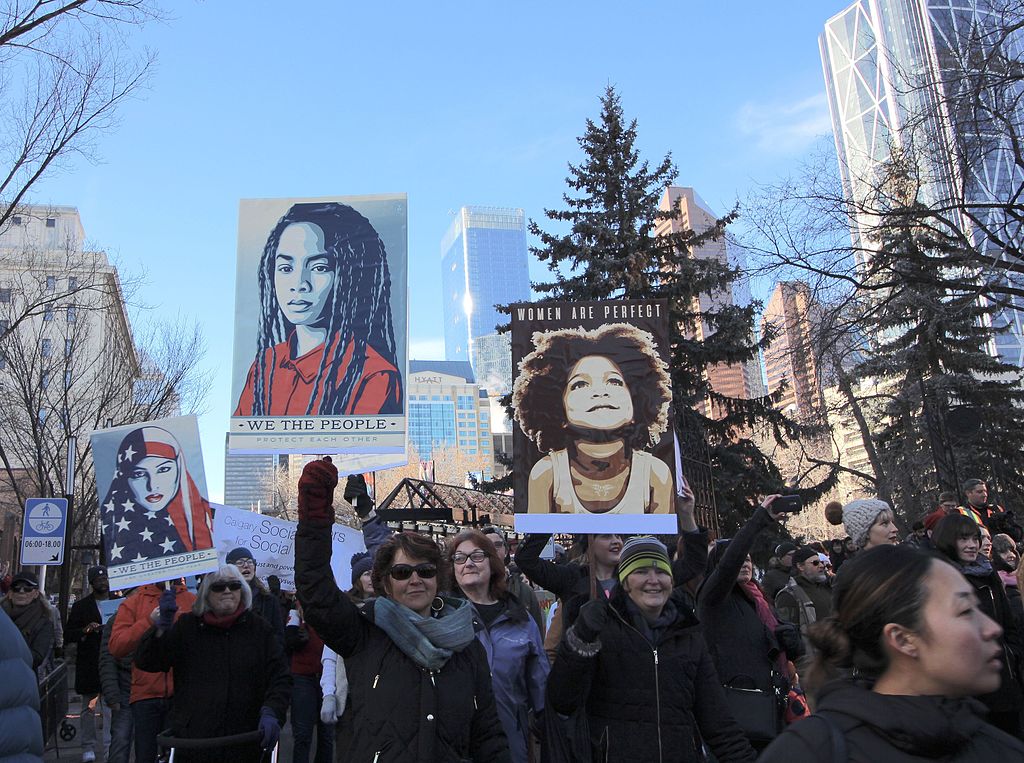
Domestic Violence: A Global Problem Requiring a Global Solution
A frontline anti-domestic violence activist calls to action—and for a global treaty.

Domestic abuse is devastating my home country of Russia: More than 12,000 women in Russia died from this type of violence between 2011 and 2019, according to a recent study. The vast majority of these cases occurred at the hands of intimate partners. The remaining victims were killed by members of their own family. A December ruling from the European Court of Human Rights reiterated the “staggering” scale of domestic violence against women in Russia.
Of course, violence against women and girls is not just a Russian problem—it is a global crisis. The World Health Organization warned that violence against women has become “devastatingly pervasive,” impacting one in three worldwide, with younger women most at risk. When COVID-19 sent millions into lockdown, the abuse skyrocketed even further. Suddenly, women at risk of domestic violence found themselves trapped inside with their abusers with no access to help, triggering what U.N. Women deemed a “shadow pandemic.”
The silver lining is the attention this issue is finally getting; it provides an opportunity for action. The pandemic has prompted a paradigm shift that is breaking down barriers which once seemed insurmountable. State actors who repeatedly ignored calls for change now recognize that it’s long overdue.
Combating violence against women has been my life’s work. I joined the activist movement nearly 30 years ago, long before there even was a word in Russian for domestic violence. At the beginning of my career, I founded the Center for the Prevention of Violence, Russia’s first domestic abuse helpline. At the time this was still considered a “private matter” under the law.
For the first year, I worked alone with no funding in a room the size of a closet. Approximately 700 women reached out for support. Soon I teamed up with fellow women’s rights pioneers to develop training programs, advocate for policy change, and establish a network of services for survivors. These interventions helped—but unfortunately violence against women and girls has become so prevalent that activists like me have struggled to keep pace.
I joined the activist movement nearly 30 years ago, long before there even was a word in Russian for domestic violence. The first year, I worked alone with no funding in a room the size of a closet. Approximately 700 women reached out for support.
After almost three decades of this work, I finally had the opportunity to help draft my country’s first domestic violence legislation. When the opposition learned of my involvement, they threatened my life. The state then declared my organization a foreign agent, unleashing another wave of intimidation and threats of retribution. From that time forward, I only felt safe in Russia behind the bulletproof glass I installed in my home.
A coalition of grassroots women’s rights activists, including myself, along with medical experts and human rights attorneys from all corners of the world are advocating for a solution: a new global agreement to end violence against women and girls.
Women living in countries that have domestic violence legislation have a 32 percent lower mortality rate than those in other countries. Fifteen years after passing the Violence Against Women Act, the United States’ rate of intimate partner violence dropped 53 percent. And in eight Ugandan communities, violence prevention training cut intimate partner violence in half.
There are some regional treaties aimed to protect women from violence in Latin America, Africa and Europe that have proven effective—but they leave out three-quarters of the world’s population. Efforts to retrofit the Convention on the Elimination of All Forms of Discrimination Against Women (CEDAW) to include violence have made progress, but are not sufficient.
Globally, 243 million women and girls were subjected to sexual or physical violence by an intimate partner in the year leading up to the pandemic. This is 243 million too many.
A global agreement would require prevention education, increased funding for survivor services and the establishment of an international monitoring body to hold states accountable to protect all women and girls around the globe. With globally binding norms in place, patriarchal nations like Russia will have a harder time turning a blind eye and condoning the abuse.
Current international efforts are not sufficient. Globally, 243 million women and girls aged 15-49 were subjected to sexual and/or physical violence perpetrated by an intimate partner in the year leading up to the pandemic. This is 243 million too many. We are calling on the global community to re-assess the current framework and make the changes needed to ensure that every woman and girl in every community on Earth feels safe and protected.
The campaign to end gender-based violence could follow the same trajectory as the women’s rights movement after the 1995 Beijing World Conference on Women, a truly inspiring moment in history when 189 countries united in agreement that women’s rights are human rights. The conference led to positive change, including more women in positions of power, but progress has been slow. We need a strong next step to eradicate violence against women.
Alarms are sounding when it comes to the need to stop domestic violence—and momentum is building. We have arrived at a tipping point. Activists, Nobel Peace Prize laureates, and world leaders from Africa, the Middle East, Asia, Europe and Latin America are calling for a global treaty.
Frontline activists like myself can’t continue to put ourselves in harm’s way without international law backing us up. By leveraging current awareness and global political will, we can take impactful steps to create a safer, more equitable world for our daughters. No more murders. No more rape. No more turning a blind eye.
